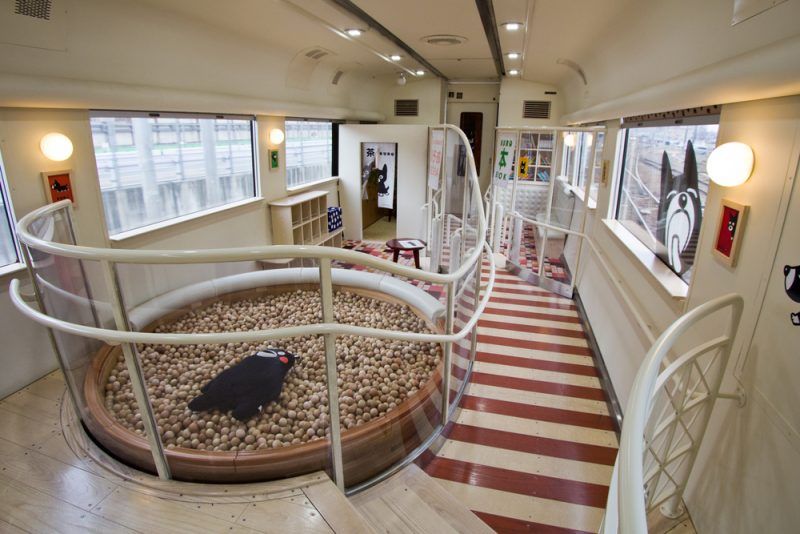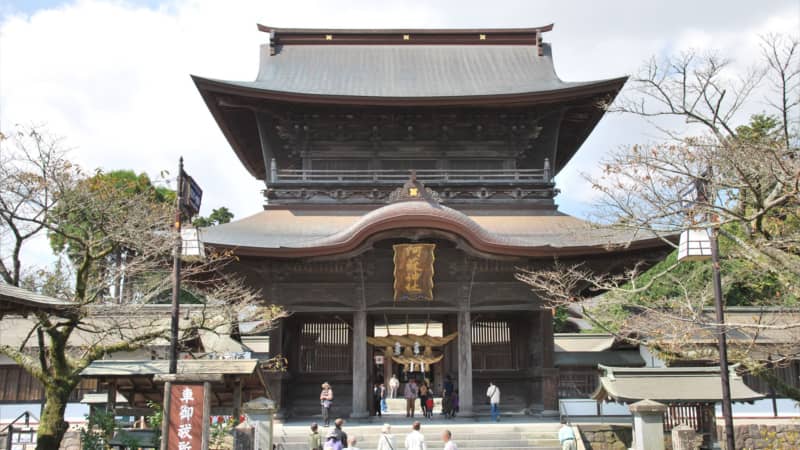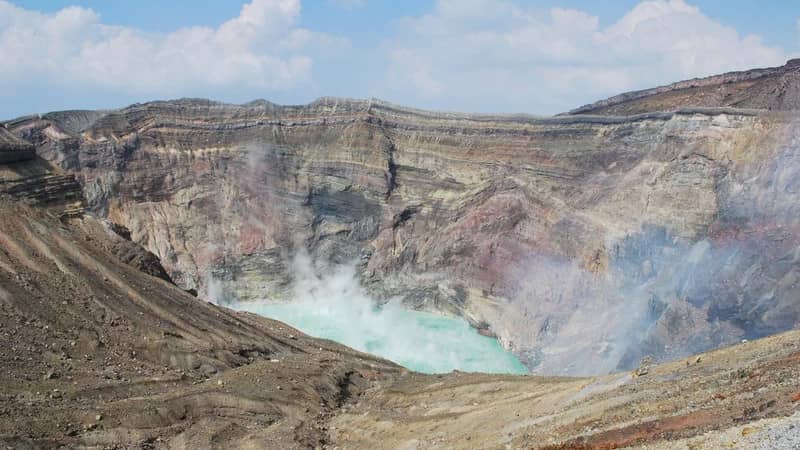Mount Aso is located in Aso City, in the Kumamoto Prefecture of Kyushu Island. A constant stream of smoke is emitted from the caldera, a reminder that the volcano is active.
The landscape is very diverse. Inside the caldera, there’s everything from grassy plains with grazing horses and cattle, to the rocky Nakadake peak.
If you’re feeling adventurous, read on to find out how to get to Mount Aso, what to see and do, and other visitor information.
Table of Contents
How to get to Mount Aso
To get to Mount Aso, you’ll first need to make your way to Aso Station. Local trains and limited express trains (both covered by your Japan Rail Pass) connect Aso and Kumamoto stations.
From JR Aso Station, you can take the bus to Asosan Nishi Station, the journey takes around 30 to 40 minutes. Note that this bus ticket is not included in the JR Pass.
There is a shuttle bus to Nakadake Crater, you can also walk to it in around 30 minutes.
A convenient way to get around the Aso area is by renting a car. There are car rental companies in Kumamoto City.
The Aso Boy train
The Aso Boy limited express train is one of the most popular ways to get to and from Mount Aso. You can ride it with your JR Pass.
The line features designer trains with unusual layouts, often with stylized and decorative interiors. This makes for a unique and comfortable trip through this scenic part of Japan to the volcano.
At each end of the train, you’ll find panoramic windows so you can take in the views. There are also lounge areas with sofas or benches facing the windows.
Aso Boy is known for its mascot Kuro — an adorable small black cartoon dog, who appears all over the exterior and interior of the trains.
These family-friendly trains have a unique seating arrangement, so that children always get a window seat next to their parent. There are also play areas, children’s books featuring Kuro, and a café with snacks available.

The line runs from Kumamoto to Miyaji and Beppu, stopping at Aso and various other stations in between.
Aso Boy route
The Aso Boy calls at the following stations:
- Kumamoto
- Shin-Suizenji
- Suizenji
- Musashizuka
- Hikarinomori
- Higo-Ozu
- Tateno
- Akamizu
- Aso
- Miyaji
- Bungo-Ogi
- Bungo-Taketa
- Ogata
- Miemachi
- Naka-Handa
- Oita
- Beppu
You can use the service to get to Mount Aso from any of these places.
How to get to Mount Aso from Kumamoto
To get to Mount Aso from Kumamoto, simply take the Aso Boy train at JR Kumamoto station.
The limited express line starts at Kumamoto and arrives at Mount Aso in around 1 hour and 20 minutes.
How to get to Mount Aso from Fukuoka
The simplest way to travel from Fukuoka to Mount Aso is via Kumamoto.
You can catch the JR Sanyo Shinkansen from Fukuoka Hakata Station to Kumamoto. This takes 30-40 minutes.
From there, catch the Aso Boy limited express train along the JR Hohi Line.
This journey is fully covered by the JR Pass, including both trains.
What to see when visiting Mount Aso
Mount Aso can be enjoyed from a distance. Views of the volcano are breathtaking from the surrounding areas. If you want to get a closer look, these are the most interesting sights inside the caldera.
Nakadake, Mount Aso’s most active volcano
Nakadake volcano is one of the active volcanic peaks in the center of the caldera. Inside the crater, there is hot spring water rich in minerals
You can usually visit the crater of Mount Nakadake, but the crater area may be closed off during bad weather, episodes of volcanic gases, or the risk of volcanic activity. Be sure to check it’s open before you head there.
Komezuka volcanic cone and walking trails
Another attraction is Komezuka, a volcanic cone around 50 meters high. It’s a cute, symmetrical cone covered in and surrounded by grassy fields. You can enjoy walking trails around Komezuka.
Aso Shrine dating back over 2000 years
Aso Shrine shouldn’t be missed when visiting Mt. Aso. The shrine is historically significant, believed to date back to the end of the Yayoi period (300 BC to 300 AD).
An earthquake in 2016 caused the Aso shrine’s most noteworthy feature, the Roman Gate, to collapse. Reconstruction works are planned.

Mount Aso Museum and Visitor Center
To find out more about the site, tourists can visit the Aso Volcano Museum and Visitor Center. The building is set on a grassy plain within the Aso caldera, around 2.5 miles from Nakadake crater.
The Mount Aso visitor center includes exhibits explaining the geology and topography of Mount Aso, plants and wildlife, and local culture.
In the same building as the visitor center is Mount Aso Museum. The museum offers a more detailed look at Mount Aso. The museum includes multimedia exhibits and interactive activities. There is also a shop and a café.
Mount Aso museum opening hours and fees
Mount Aso Museum and Visitor Center are open year-round from 9 am to 5 pm. It may be closed during bad weather, so it’s worth checking in advance.
The visitor center is free, however, there is a small fee to enter Mount Aso Museum. Fees are subject to change.
Mount Aso onsen region
The mineral-rich hot springs source several onsens in the area which are enjoyed by locals and visitors.
Some of the most popular onsens in the Aso Area include:
- Gekkoji Ryokan
- Ryokan Sanga
- Kurokawa onsen
- Tsuetate onsen
- Uchimaki onsen
You can combine exploring the caldera with a relaxing visit to an onsen. The hot springs offer visitors a chance to relax and enjoy the health benefits of the spring water.
Facts about Mount Aso
Here are some of the most interesting facts about Mount Aso:
- Mount Aso is the largest active volcano in Japan
- It is one of the largest active volcanoes in the world
- The volcano’s peak is around 5,223 ft (1,592 m) above sea level
- Mount Aso has a huge caldera with a circumference of approximately 75 miles (120 km)
- It is the volcano with one of the largest calderas in the world
Mount Aso is an impressive natural wonder in Japan. You should definitely consider adding it to your Japanese travel itinerary.
When was the last time Mount Aso erupted?
Mount Aso last erupted at 11:43 am local time on Wednesday, October 20, 2021. Following the eruption, Japan Meteorological Agency (JMA) issued a level 3 volcanic activity alert. There were no reports of casualties or major damage to the area.
Sporadic eruptions have occurred for decades. There have been 38 separate eruptions since 1950, all of which have occurred at the Nakadake crater.
